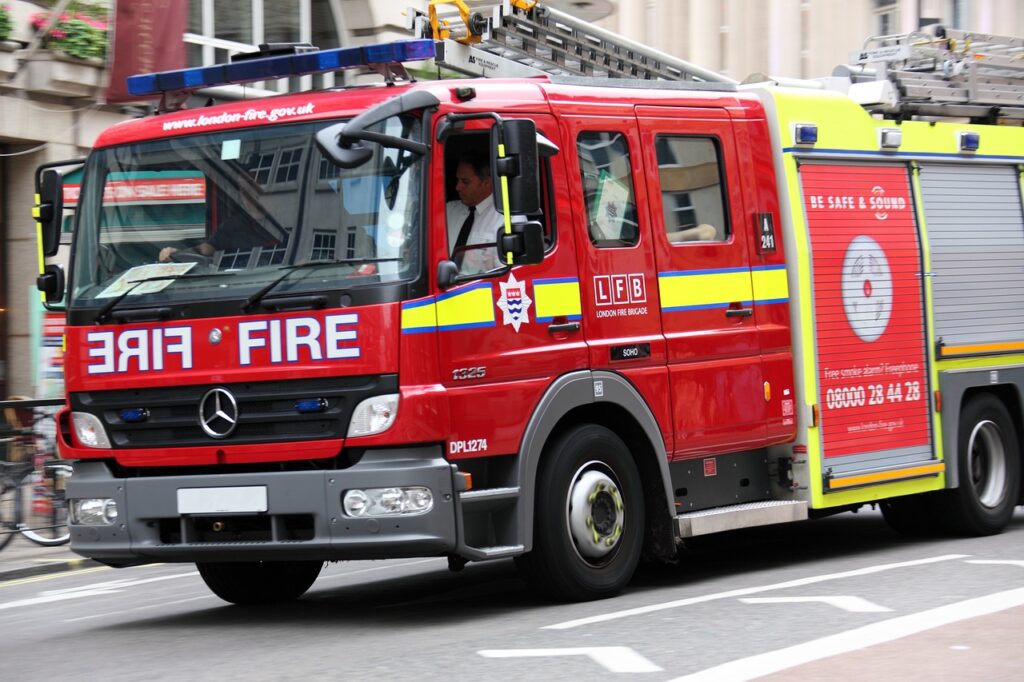DBS Checks & Criminal Record Checks Register Now Care Check...
Read MoreDBS Checks & Criminal Record Checks
Care Check is a leading umbrella body for the Disclosure and Barring Service and has been named one of the top 8 providers for criminal record checks in the UK.
Sign up to our newsletter
"*" indicates required fields
Get in touch with us

Fire and Rescue Employee Checks Strengthening for Public Safety
Fire and rescue authorities are entrusted with keeping people, property and animals safe in the event of an emergency, making these some of the most important employees in the UK. In recent years, this crucial sector has focussed on improving public safety and the trusted integrity of its employees.
In this blog, Care Check explores the three important changes made to the checking requirements for fire and rescue employees, highlighting the increased focus on criminal record checks, the introduction of the Fire Safety (England) Regulations 2022, and the responsibilities of the “responsible person” in ensuring fire safety in non-domestic premises. Let’s dive in.
Criminal Record Checks for Fire and Rescue Employees
To raise overall standards and enhance public and staff protection, fire and rescue authorities can now conduct more rigorous standard Disclosure and Barring Service (DBS) checks on all employees.
Previously, only Basic DBS Checks were required for fire and rescue professionals, which provided information on unspent cautions and convictions. However, with the new legislation introduced in April 2023, the more stringent option, Standard DBS Checks, is now available.
These include details on spent convictions, cautions, reprimands, and final warnings. These checks enable fire and rescue services to understand and mitigate risk, safeguard colleagues and the public, and uphold high levels of integrity within the profession. That said, this is an optional check. Fire and rescue employees are now eligible, but they can be conducted at the discretion of each individual fire and rescue authority.
UK Fire Safety Regulations 2022
In response to the Grenfell Tower tragedy, the Fire Safety (England) Regulations 2022 came into force on January 23, 2023. These regulations extend the existing requirements under the Fire Safety Order 2005 and introduce additional obligations for managing multiple occupancy residencies.
The regulations apply to all multi-occupied residential buildings with two or more sets of domestic premises. Here are a few key provisions of this fire safety act:
- Providing Fire Safety Instructions: Relevant fire safety instructions must be provided to residents. These instructions should cover reporting a fire and actions to be taken based on the evacuation strategy of the building.
- Emphasising the Importance of Fire Doors: Residents must receive information on the significance of fire doors, including keeping them closed when not in use, not tampering with self-closing devices, and reporting any faults or damages promptly.
- Regular Fire Safety Information: All residents should receive fire safety information annually, with new residents receiving it as soon as is reasonable after moving in.
Enhanced Checks for High-Rise Residential Buildings: High-rise residential buildings which are at least 18 meters above ground level or seven storeys have additional requirements. This includes providing detailed information to Fire and Rescue Services to aid in operational response planning. Monthly checks on fire fighting equipment, operation of designated lifts for firefighters, and installing secure information boxes containing essential information for the fire and rescue service are also mandatory.
DBS Checks & Criminal Record Checks
Updated Responsibilities of the Responsible Person
First things first, “responsible person” refers to individuals or entities responsible for fire safety in non-domestic premises. This includes employers, owners, landlords, occupiers, facilities managers, and others with control over the premises. The Fire Safety Regulations require responsible persons to:
- Conduct Fire Risk Assessments: The responsible person must undertake and regularly review fire risk assessments of the premises to identify potential risks. They can also outsource their fire risk assessment to other organisations.
- Inform Staff and Take Appropriate Measures: Staff or their representatives should be informed about identified risks, and appropriate fire safety measures must be implemented and maintained.
- Conduct Emergency Planning: Responsible persons are responsible for creating emergency plans that outline how to handle fire-related incidents effectively.
- Provide Information and Training: This person also needs to provide staff with necessary fire safety information, instruction, and training. All of these requirements mean that most businesses outsource the role of the responsible person. A professional can provide additional safety measures and ensure compliance with all fire safety legislation.
Final Thoughts on DBS Checks and Changes for Fire and Rescue
The changes made to the checking requirements for fire and rescue employees, along with the implementation of the Fire Safety (England) Regulations 2022 and the newly added-to responsibilities of the responsible person, all aim to improve safety and maintain integrity within the fire and rescue sector.
By conducting more rigorous criminal record checks, ensuring compliance with fire safety regulations, and assigning clear responsibilities, these measures contribute to a safer environment for both the public and fire and rescue personnel.
Note: If you would like to know more about DBS Checks and what they show, read our blog on the different types of DBS Checks.
Read more
Can I Get Sacked For What I Post On Social Media?
DBS Checks & Criminal Record Checks Register Now Care Check...
Read MoreWhat Are Right to Work Checks?
DBS Checks & Criminal Record Checks Register Now Care Check...
Read MoreWhy we are partnered with TrustID
DBS Checks & Criminal Record Checks Register Now Care Check...
Read More



